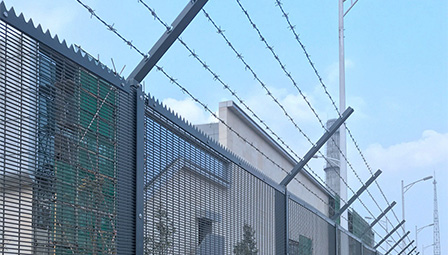industrial material handling racks
Set . 25, 2024 22:13
Industrial Material Handling Racks A Vital Component in Modern Warehousing
In today's rapidly evolving industrial landscape, efficiency and organization are paramount, especially in warehouse and storage environments. Among the various solutions available to optimize space and streamline operations, industrial material handling racks stand out as essential components. These racks not only support the storage of goods but also enhance productivity, safety, and accessibility in any facility.
Understanding Industrial Racks
Industrial material handling racks are structures designed to store and manage goods effectively. They come in various types, including pallet racks, shelving units, cantilever racks, and mezzanine systems, each serving different storage needs and space constraints. The primary purpose of these racks is to increase storage density while allowing for easy retrieval of products.
Pallet racks, for instance, are widely used in warehouses for storing large quantities of items on pallets. They facilitate the use of forklifts, enabling quick loading and unloading. Shelving units, on the other hand, are ideal for smaller items, often found in retail or light industrial settings. Cantilever racks are perfect for storing long, unwieldy items such as lumber or pipes. These racks can be customized to fit specific operational needs, ensuring that every inch of space is utilized efficiently.
Benefits of Using Industrial Racks
1. Space Optimization One of the most significant advantages of industrial racks is their ability to maximize storage space. By utilizing vertical space and organizing items systematically, businesses can increase their storage capacity without expanding their facilities. This verticality is crucial, especially in warehouses where floor space can be limited.
2. Improved Accessibility Industrial racks are designed to make items easily accessible. Well-organized racking systems reduce the time spent searching for products, allowing for quicker picking and shipping. This efficiency is vital in meeting customer demands and enhancing overall service levels.
3. Enhanced Safety A well-structured racking system can significantly improve workplace safety. By ensuring adequate space for walking and maneuverability, industrial racks can reduce the risk of accidents. Additionally, proper installation and maintenance of these racks prevent hazards associated with overloading and instability.
4. Cost Efficiency By improving organization and accessibility, industrial racks can contribute to cost savings in labor and operational expenses. Efficient storage reduces the time employees spend on tasks, leading to higher productivity and potentially lower labor costs. Furthermore, a well-functioning racking system can extend the lifespan of products by minimizing damage during handling.
industrial material handling racks

5. Adaptability Industrial material handling racks are highly adaptable. As business needs change, these systems can be reconfigured or expanded to accommodate new inventory types or larger quantities. This flexibility is crucial for businesses facing fluctuating demands or those looking to grow.
Choosing the Right Racking System
When selecting an industrial material handling rack system, several factors should be considered
- Type of Goods Determine the types of products that will be stored. Heavier items might require more robust pallet racking, while lighter products may fit well in shelving systems.
- Storage Environment Consider the environmental conditions, such as temperature and humidity, which may affect the materials used in the racks.
- Space Limitations Evaluate the available space to choose a system that optimizes vertical and horizontal storage effectively.
- Future Scalability Anticipate future growth and select a racking system that can adapt to changing needs without significant reinvestment.
Conclusion
Industrial material handling racks are crucial in building efficient, organized, and safe storage solutions in modern warehouses. Their adaptability, space optimization, and safety features make them indispensable in various industries. As businesses strive to enhance their operations and meet increasing demands, investing in high-quality racking systems is a decision that yields significant long-term benefits. In a competitive marketplace, these solutions not only support daily operations but also contribute to overall business success by enabling agility and responsiveness.




















